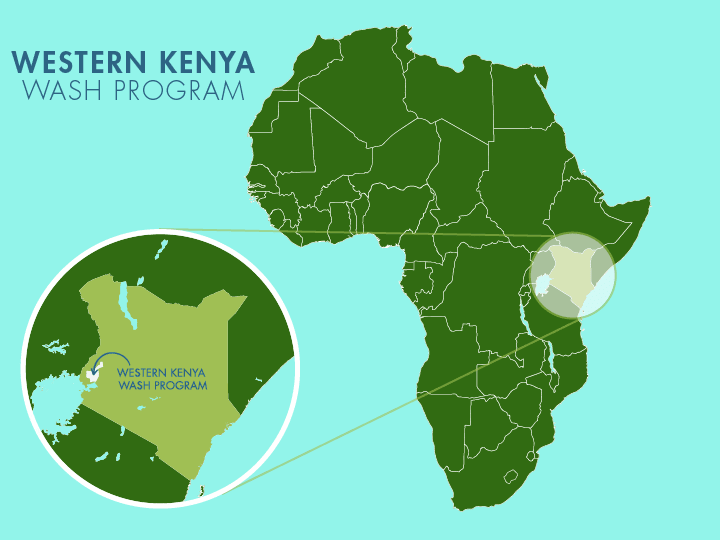In the Shivakala Community, frustration and illness flow rapidly from the William Ang'ayo spring, which supplies water to two hundred people daily as their primary source.

The spring in need of repair.
Field Officer Gladys Chepkokir described the negative effects of the spring. "Consumption of contaminated water, having some community members washing their clothes close to the spring box, [this all] poses a challenge of water being prone to contamination. They reported that they cough whenever they drink water from this particular water source, and sometimes it is challenging to get treatment."
No one is immune to the water crisis in the Shivakala Community, especially children.
Brian is only 7 years old. He remembers vividly the last time he contracted a waterborne illness. "I had [a] fever and stomachache and could not sleep well. It was [the most] terrible experience I have ever had."

Brian.
He missed school until he recovered, missing out on crucial learning time, but illness isn't the only thing robbing Brian of his education.
Brian spends four hours a day collecting water. The spring is busy; much of that time is just waiting for his turn to fill his jerrycan.
"Sometimes, I fail to complete my assignments on time because of spending a lot of time queuing at the waterpoint, so I am forced to use my morning hours to complete my homework, hence being late attending morning lessons," Brian lamented.
Brian’s struggles reflect a wider reality: everyone at the spring feels the strain. That often comes out while everyone is waiting in line, knowing they are losing precious time for other tasks.

A young child collects water from the spring.
Brian has felt the side effects of the struggling unity. We asked if he had ever been pushed to the back of the line. He responded, "Yes, when I am alone and cannot defend myself."
"One of the community members threw my container away, so I had to wait until he was done fetching so that I [could] go and collect the container, fetch water, and go back home. I felt bad," he reflected.

Brian dreams of a childhood where clean water is easily accessible, where he doesn’t have to compete with adults to meet his basic needs. He wants to read books and do his chores; he craves peace and health. Clean, accessible water is the foundation for all of his hopes.
Repairing the William Ang'ayo spring will ensure that Brian has sufficient water that won't make him sick. He won't have to miss school and will even have time to play with his friends. These simple childhood joys will give Brian the tools he needs to thrive.
Steps Toward a Solution
Our technical experts worked with the local community to identify the most effective solution to their water crisis. They decided to safeguard the existing flowing spring.
Spring Protection
Springs are natural water sources that originate from deep underground. As water travels through various layers of the earth, it undergoes a natural filtration process, making it cleaner and safer to drink. To protect these spring sources from contamination, we construct a waterproof cement structure around layers of clay, stone, and soil. This design channels the spring water through a discharge pipe, facilitating easier, faster, and cleaner water collection.
Chlorine Dispenser
As an extra measure towards water quality safety, uniquely engineered chlorine dispensers are installed at all of our spring protection projects so community members can treat their water with pre-measured doses of chlorine. The chlorine treats any possible contamination and stays active for two to three days, ensuring water stays safe to use even when stored at home. Chlorine delivery and maintenance of the dispensers are part of our ongoing community support.
Community Education & Ownership
Hygiene and sanitation training are integral to our water projects. Training is tailored to each community's specific needs and includes key topics such as proper water handling, improved hygiene practices, disease transmission prevention, and care of the new water point. Safe water and improved hygiene habits foster a healthier future for everyone in the community. Encouraged and supported by the guidance of our team, a water user committee representative of the community's diverse members assumes responsibility for maintaining the water point, often gathering fees to ensure its upkeep.

 Protected Spring
Protected Spring
 Rehabilitation Project
Rehabilitation Project


















